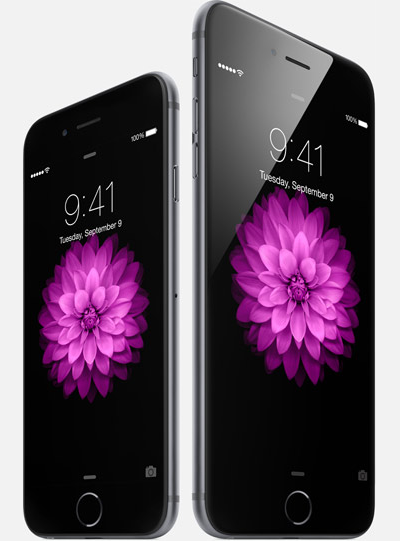I was at the RAIN conference in Indianapolis catching up with a mix of Broadcast and Internet Radio executives. There was a lot of great content shared. The Internet Radio industry is definitely a numbers-driven market and there was plenty of data to chew on. With that said, sometimes data cannot capture the mood of an industry in transition, as well as a good metaphor. Paul Jacobs had just that metaphor for his panel entitled, “Mobile is the New Black.”
Listening Has Become a Mobile Phenomenon
 The growth of listeners on mobile has been incredible; over the past several years mobile media consumption has grown at a rate of at least 20% per annum. In fact, mobile is the only media consumption growth category. According to eMarketer data, consumption of media in print, Internet, TV and terrestrial radio have all declined. Mobile media consumption on the other hand increased by 20% in 2013.
The growth of listeners on mobile has been incredible; over the past several years mobile media consumption has grown at a rate of at least 20% per annum. In fact, mobile is the only media consumption growth category. According to eMarketer data, consumption of media in print, Internet, TV and terrestrial radio have all declined. Mobile media consumption on the other hand increased by 20% in 2013.
Radio is one media that has definitely witnessed a strong shift to mobile. It’s not surprising. From its inception, consumers were looking to take radio with them. That led to radios in the car dashboard, pocket-sized transistor radios, even the Walkman. It was inevitable that smartphones with their connectivity and processing capacity would become an audio delivery platform. Audio content simply moved from other devices to the phone because it is ever present and capable. First, it was iTunes and Podcasts, then music download services, radio simulcast and streaming services migrating to mobile. Today it is the fastest growing audio segment by a large margin and is introducing new ways for consumers to connect directly with content providers.
Jim Kott of Abacast (WideOrbit) said, “We stream approximately two thousand stations. In August of this year, more than 50% of our listeners were mobile. Just one year ago, that number was 28%.” According to another presentation by Edison Research Founder Larry Rosin, this dramatic growth means mobile radio delivered over the Internet will exceed AM-FM listening in 6-8 years.. However, it is also impacting terrestrial radio as more people tune into radio broadcasts on mobile because of convenience. The growth in iHeart Radio is a direct result of this shift.
The Importance of Innovation
The mobile platform offers unprecedented opportunities to innovate. However, Paul Jacobs said, when it comes to the creation of mobile apps, far too many radio organizations simply “set it and forget it, and then move on to the next shiny object. It’s as though the app is just another transmitter.” He went on to point out that many stations fail to promote their apps and haven’t updated them in years. Panelists warned those in the audience that unless mobile is a key component of a station’s overall strategy, it will fall behind.
Technology to Lead the Way in Interactivity, Ubiquity
 Several panel members made the point that technology will continue to accelerate the growth in mobile. On this point, Jacobs mentioned XAPPmedia. Advertisers are questioning the effectiveness of traditional digital advertising approaches on mobile as they attempt to reach this rapidly growing audience. At the same time, the industry is trying to determine how to effectively monetize mobile platforms because they command so much attention from consumers.
Several panel members made the point that technology will continue to accelerate the growth in mobile. On this point, Jacobs mentioned XAPPmedia. Advertisers are questioning the effectiveness of traditional digital advertising approaches on mobile as they attempt to reach this rapidly growing audience. At the same time, the industry is trying to determine how to effectively monetize mobile platforms because they command so much attention from consumers.
Technologies such as XAPPmedia’s voice activated technology will play a key role in addressing this challenge. XAPPmedia connects listeners directly with brands, hands free, and eyes free. As a result, publishers, brands and listeners benefit. The interactivity is a key element that radio has been missing. People want to connect with radio personalities and content but the best they can do is typically pick up another device such as a phone and compete in on-air contests or request songs. Mobile provides rich opportunities for interaction not because it is a phone, but because it is personal, connected and always available.
If you were Starting a Radio Station Today
The fact is that if you were starting a radio station today, you’d start it on mobile first. It provides easy access to content and provides the opportunity for always-available consumer access and personal connections with the audience. If you are not focused on mobile, you should be. As Wayne Gretzky was noted as saying, “… skate where the puck is going to be.” In the end, mobile is the new black because that is where the audience is gathering. The radio industry knows a lot about audience and now has a chance to create even stronger, more personal connections by meeting that audience on mobile.
Related Posts
The Data Piles Up – Radio Serves Ultramobile Listeners
Custom Actions for Mobile Audio Ad Conversion
Unpacking the Data on Mobile Ad Effectiveness
